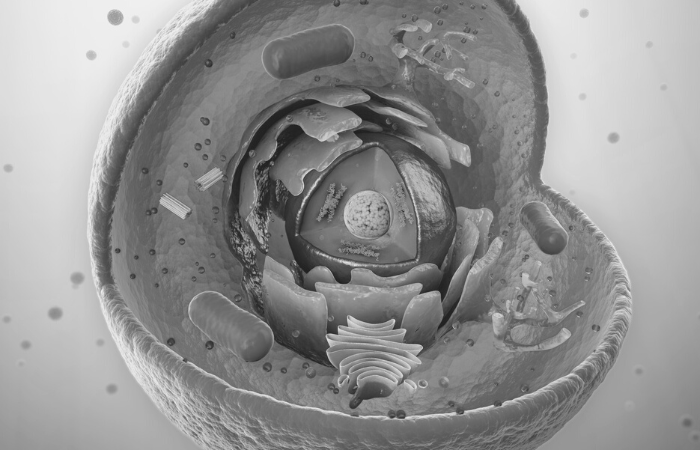According to estimates from scientists there are about 37,2 trillion cells in a human body.
The cell is a complex and elegantly designed system. To get a full grasp on its complexity we must magnify a cell until it is twenty kilometers in diameter. What we would then see would be an object of unparalleled complexity and adaptive design.
On the surface of the cell, we would see millions of openings, like port holes of a vast spaceship, opening and closing to allow a continuous stream of materials to flow in and out. If we were to enter one of these openings, we would find ourselves in a world of supreme technology and bewildering complexity: a complexity beyond our own creative capacities, a reality which is the very antithesis of chance, which excels in every sense anything produced by the intelligence of man.
The technology of the 20th century has delved into the tiniest particles of life and has revealed that the cell is the most complex system mankind has ever confronted. Today we know that the cell contains power stations producing the energy to be used by the cell, factories manufacturing the enzymes and hormones essential for life, a databank (DNA) where all the necessary information about all products to be produced is recorded, complex transportation systems and pipelines for carrying raw materials and products from one place to another, advanced laboratories and refineries for breaking down external raw materials into their useable parts, and specialized cell membrane proteins to control the incoming and outgoing materials. And these constitute only a small part of this incredibly complex system.
Now that we have taken a minuscule glance at the complexity of the cell let’s talk about the simplest building block of the cell, an individual protein. Proteins are giant molecules consisting of smaller units called “amino acids” that are arranged in a particular sequence in certain quantities and structures. These units constitute the building blocks of a living protein. The simplest protein is composed of 50 amino acids, but there are some that contain thousands. The formation, under natural conditions, of just one single protein out of the thousands of complex protein molecules making up the cell is impossible.
The crucial point is this. The absence, addition, or replacement of a single amino acid in the structure of a protein causes the protein to become a useless molecular heap. Every amino acid has to be in the right place and in the right order. The theory of evolution, which claims that life emerged as a result of chance, is quite helpless in the face of this order, since it is too wonderous to be explained by coincidence. The fact that it is quite impossible for the functional structure of proteins to come about by chance can easily be observed even by simple probability calculations that anybody can understand.
For instance, an average-sized protein molecule composed of 288 amino acids and contains twelve different types of amino acids can be arranged in 10300 different ways. (This is an astronomically huge number, consisting of 1 followed by 300 zeros.) Of all these possible sequences, only one forms the desired protein molecule. The rest of them are amino-acid chains that are either totally useless or else potentially harmful to living things.
In other words, the probability of the formation of only one protein molecule is “1 in 10300“. The probability of this “1” to occur is practically nil.
Furthermore, a protein molecule of 288 amino acids is a rather modest one compared with some giant protein molecules consisting of thousands of amino acids. When we apply similar probability calculations to these giant protein molecules, we see that even the word “impossible” is insufficient to describe the true situation. When we proceed one step further in the evolutionary scheme of life, we observe that one single protein means nothing by itself.
One of the smallest bacteria ever discovered, Mycoplasma hominis H39, contains 600 “types” of proteins. In this case, we would have to repeat the probability calculations we have made above for one protein for each of these 600 different types of proteins. The result beggars even the concept of impossibility.
Some people reading these lines who have so far accepted the theory of evolution as a scientific explanation may suspect that these numbers are exaggerated and do not reflect the true facts. That is not the case: these are definite and concrete facts. No evolutionist can object to these numbers. They accept that the probability of the coincidental formation of a single protein is “as unlikely as the possibility of a monkey writing the history of humanity on a typewriter without making any mistakes”. However, instead of accepting the other explanation, they go on defending this impossibility.
#getPURPOSE

